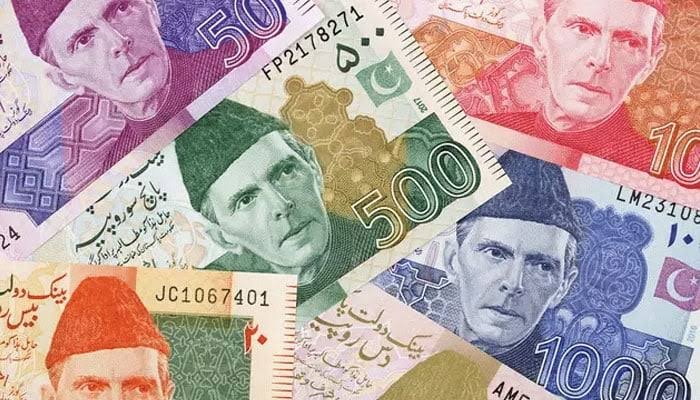Key Takeaways:
- Pakistan’s total government domestic debt and liabilities increased by 23.38% year-on-year in May 2024, reaching Rs46.75 trillion.
- Permanent debt rose significantly by 27.79% year-on-year, totaling Rs33.43 trillion.
- Government’s unfunded debt saw a decline of 4.91% year-on-year, primarily due to reduced saving schemes.
The State Bank of Pakistan (SBP) has reported a significant increase in the total government domestic debt and liabilities, which surged by 23.38% year-on-year to Rs46.75 trillion in May 2024, compared to Rs37.89 trillion in May 2023. This data underscores the growing financial obligations faced by the government.
On a month-on-month basis, domestic debt and liabilities also rose by 3.89% from Rs45 trillion in April 2024. The SBP’s detailed breakdown highlights that the majority of this debt is categorized as permanent debt, which saw a substantial growth of 27.79% year-on-year, reaching Rs33.43 trillion.
This permanent debt comprises various components, including Rs32.57 trillion in federal government bonds, Rs474.94 billion in SBP’s on-lending to the government against Special Drawing Rights (SDRs) allocation, Rs384.39 billion in prize bonds, and Rs2.84 billion in market loans. The increase in these categories reflects the government’s reliance on long-term borrowing instruments to finance its obligations.
The floating debt also saw a notable rise of 28.09% year-on-year, amounting to Rs9.52 trillion in May 2024, up from Rs7.43 trillion in the same period last year. Market Treasury Bills (MTBs) formed the bulk of this floating debt, standing at Rs9.44 trillion in May 2024. This increase indicates the government’s continued use of short-term debt instruments to meet its financial needs.
Conversely, the government’s unfunded debt decreased by 4.91% year-on-year to Rs2.79 trillion in May 2024. This decline is primarily attributed to a significant drop in saving schemes, which fell by 4.55% year-on-year to Rs2.7 trillion, compared to Rs2.83 trillion in the same period last year. The reduction in saving schemes suggests a decrease in public participation in government-backed savings instruments.
Additionally, foreign currency loans experienced a notable decrease, amounting to Rs373.53 billion in May 2024, down from Rs383.12 billion in May 2023. The decline in foreign currency loans highlights a reduction in the government’s borrowing in foreign currencies, potentially reflecting a shift towards domestic borrowing.
Borrowing through the Naya Pakistan Certificates also saw a significant reduction of 37.51% year-on-year, falling to Rs86.79 billion in May 2024. On a month-on-month basis, this borrowing decreased by 6.42% from Rs92.75 billion in April. The decline in these certificates indicates reduced investor interest or government issuance in this specific debt instrument.
Furthermore, the government’s domestic liabilities dropped substantially by 35.17% year-on-year, reported at Rs542.61 billion in May 2024. This reduction may reflect the government’s efforts to manage and reduce its short-term financial liabilities.
Overall, the increase in domestic debt and liabilities points to the government’s growing financial commitments and the need for effective debt management strategies. The substantial rise in permanent and floating debt underscores the reliance on both long-term and short-term borrowing instruments to finance government expenditures. Meanwhile, the decline in unfunded debt, foreign currency loans, and specific borrowing instruments like the Naya Pakistan Certificates reflects shifts in borrowing patterns and possibly investor sentiment.
As Pakistan continues to navigate its economic challenges, these debt dynamics highlight the importance of sustainable fiscal policies and prudent debt management to ensure long-term financial stability. The government may need to consider additional measures to manage its debt effectively while balancing the needs of its population and economic growth objectives.




